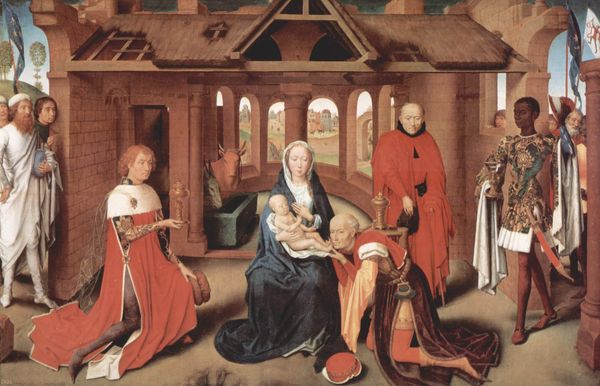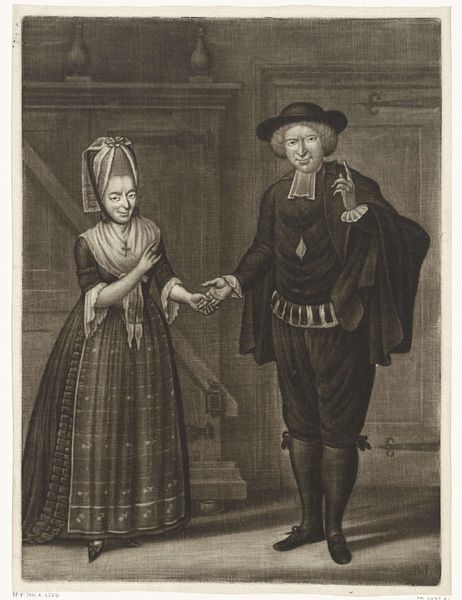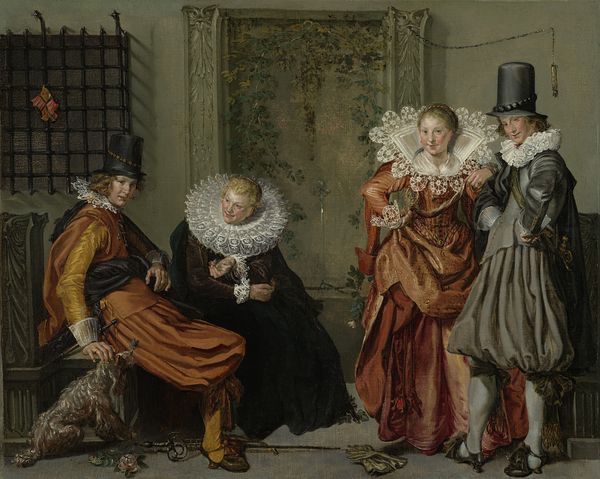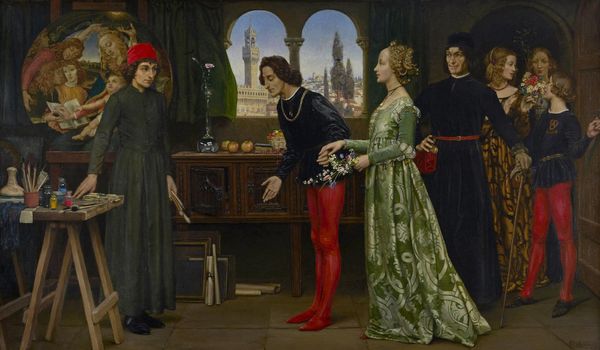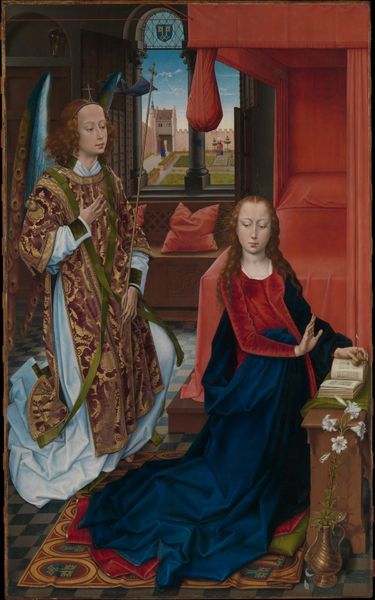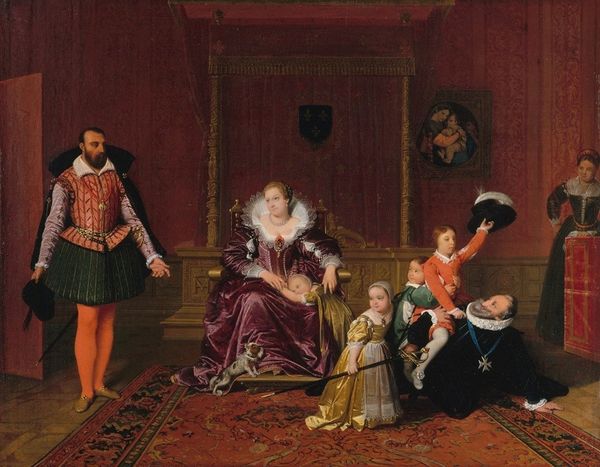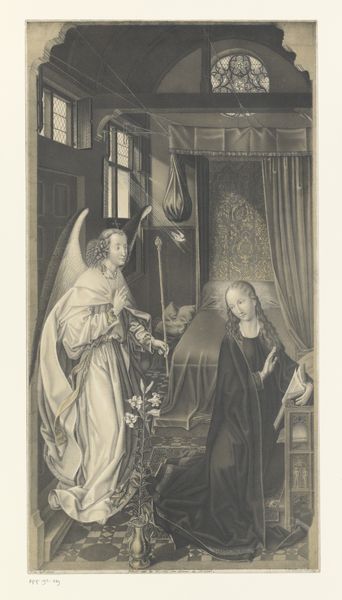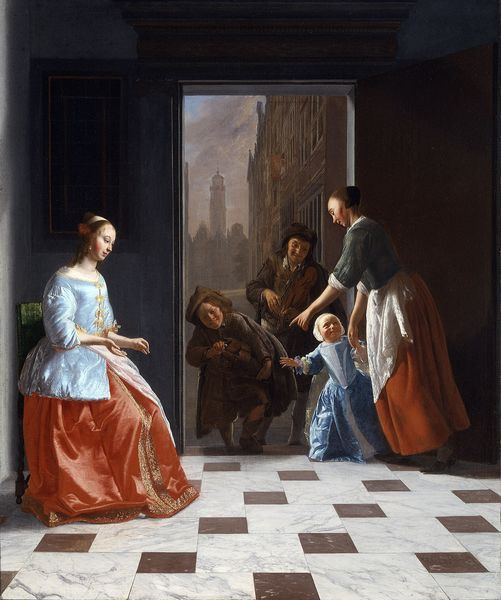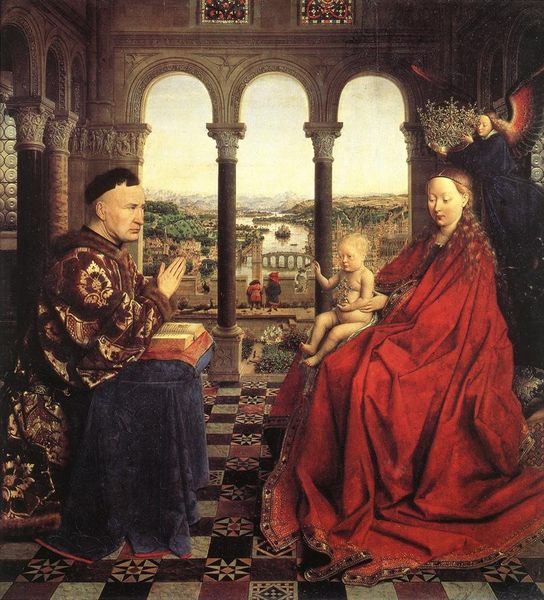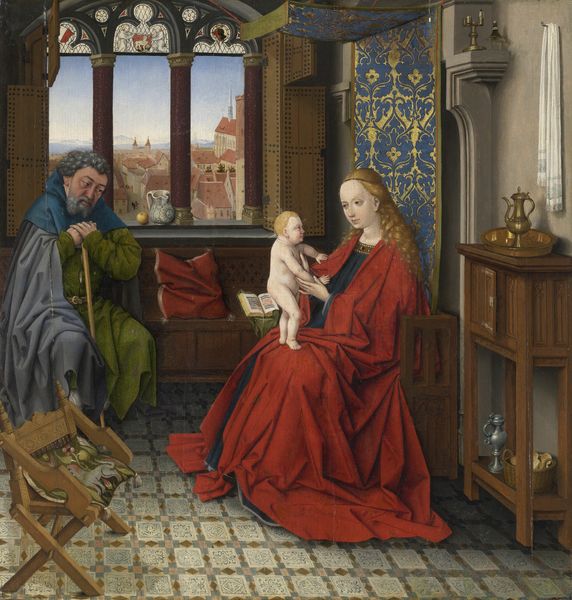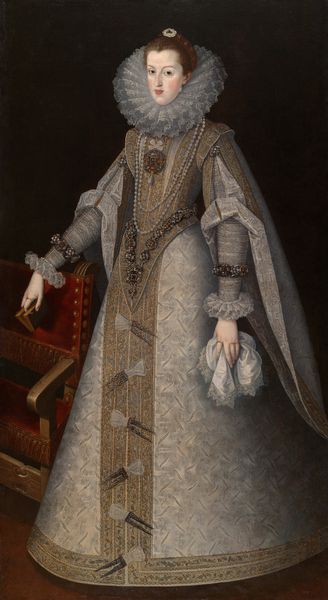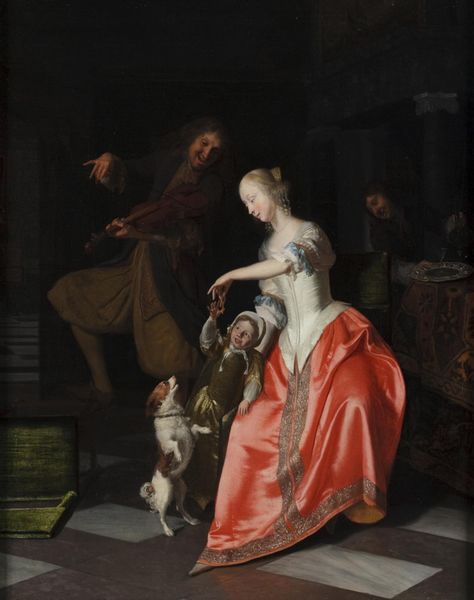
The Arnolfini Wedding. Portrait of Giovanni Arnolfini and his Wife Giovanna Cenami (The Arnolfini Marriage) 1434
0:00
0:00
oil-paint
#
allegory
#
oil-paint
#
group-portraits
#
northern-renaissance
#
early-renaissance
#
realism
Dimensions: 83.7 x 57 cm
Copyright: Public domain
Jan van Eyck’s The Arnolfini Portrait might first appear as a simple depiction of a newly wedded couple, created to immortalise their union. The famous oil painting, however, is heavy with strange and divisive symbolism which has left critics perplexed for centuries. In recent scholarship, the idea that the painting was intended as a record of marriage has been contested. This is, in part, due to the discovery that the woman supposedly depicted, Costanza Trenta Arnolfini, died two years prior to the completion of her portrait. Many have speculated that Costanza died during childbirth, offering an explanation for the positioning of her hand atop her heavy stomach. Further, the wooden bedhead behind Costanza is carved with an image of St Margaret, the patron saint of pregnancy. Several aspects of the paintings can be interpreted as allusions to death. The candle in the chandelier above the two figures is extinguished on the side of Costanza, perhaps suggesting her untimely demise. The convex mirror on the far wall is framed with scenes from the life of Christ, culminating in his Crucifixion on the border closest to Costanza. But why would Van Eyck depict a deceased woman alive and standing? A gem of the beginning of the Northern Renaissance, Van Eyck’s curious portrait of Arnolfini and his wife is an early example of the use of oil paint. Prior to the development of oil in the fifteenth century, tempera (paint composed of pigments mixed with egg yolk) was commonly used. This resulted in a mixture which was fast drying, preventing artists from capturing intricate details or blending colours. The pioneering use of oil in The Arnolfini Portrait allowed Van Eyck to build layers of pigment. This can be seen in the fantastic level of detail, especially the minute reflection in the mirror. The Arnolfini Portrait may be small, yet it holds the power to intrigue viewers almost seven centuries after its creation. What’s your favourite strange detail in the painting? Editor: Lucy Jude Grantham
Comments
Join the conversation
Join millions of artists and users on Artera today and experience the ultimate creative platform.
crystal 9 months ago
⋮
Very interesting to listen to the story behind this famous painting!
arina.mal422 9 months ago
⋮
the dog is strange 🐕 🐶 !
real almost 2 years ago
⋮
Sheeeeeesh
